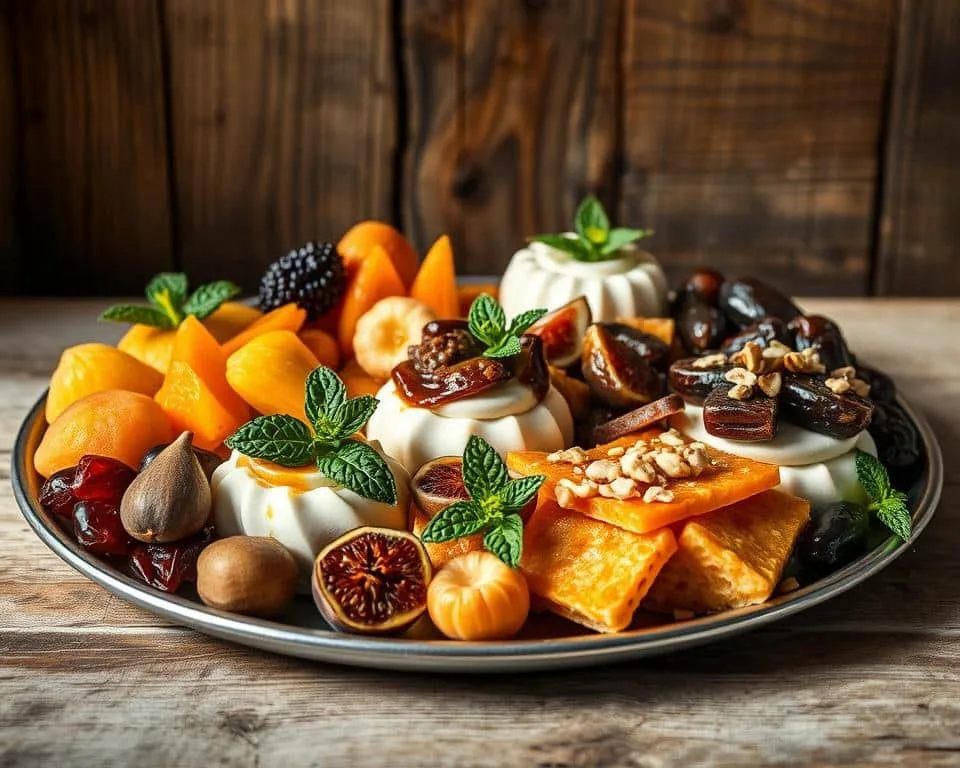Dehydrating fruit is an excellent way to preserve freshness and flavor, while also reducing its volume. Fruits that can be dehydrated are varied and include items such as apples, bananas, pears, apricots, kiwis, pineapple, strawberries and more. Dehydrating fruit not only concentrates the flavor but it also makes it more portable and can be enjoyed as a healthy snack or used in recipes.Fruits that can be dehydrated include apples, apricots, bananas, blueberries, cherries, cranberries, mangoes, peaches, pears, pineapples, plums, raisins and strawberries.
Pros of Dehydrating Fruits
Dehydrating fruits is a great way to preserve fruits for a longer period of time. By removing the moisture from the fruit, it prevents the growth of bacteria and other microorganisms that can cause spoilage. This way, dehydrated fruits can last up to a year or even longer. Another benefit is that it reduces the size and weight of the fruit significantly, making it easier to transport and store. It also preserves most of the nutrients in fruits, so you can still get all the vitamins and minerals you would get from fresh fruit. Furthermore, dehydrated fruits are very convenient as they are easier to prepare and don’t require any refrigeration or special storage conditions.
Cons of Dehydrating Fruits
Dehydrating fruits does have its drawbacks as well. The process requires a lot of heat and drying time which can lead to nutrient loss in some cases. Additionally, some vitamins such as Vitamin C are rendered inactive during dehydration so you won’t get all the benefits from them as you would from fresh fruit. In terms of taste, dried fruits usually have a more intense flavor than fresh ones due to their concentrated sugar content, so they may not be to everyone’s liking. Finally, dehydrated fruits are often more expensive than fresh ones due to their longer shelf life and convenience factor.
Dehydrating Fruits
Dehydrating fruits is a great way to preserve them for later use. This process reduces the water content of the fruit, resulting in a product with a longer shelf life. There are several different methods available for dehydrating fruits, depending on the type of fruit and desired results.
The most common method of dehydrating fruits is sun drying. This involves leaving the fruit out in direct sunlight for several days until it has dried out completely. Sun drying is best suited for fruits that have thick or tough skins such as apricots, plums, and peaches.
Oven drying is another popular method of dehydrating fruits. This involves placing the sliced fruit on baking trays and drying them in an oven set at low heat for several hours until all the moisture has evaporated. Oven-dried fruits tend to shrink more than sun-dried ones, making them ideal for use as snacks or ingredients in baked goods such as muffins and cakes.
A third option is to use a food dehydrator. This machine circulates heated air over the sliced fruit, resulting in faster dehydration than other methods. Food dehydrators also allow you to control the temperature and humidity levels more precisely than other methods, making it easier to achieve consistent results time after time.
Finally, you can also freeze-dry your fruits if you want to maintain their flavor and texture better than any other method of dehydration can provide. Freeze-drying removes almost all of the water from the food while maintaining its shape and texture better than other methods can achieve. Freeze-dried fruits are often used as ingredients in granolas and trail mixes due to their light weight and crunchy texture.
No matter which method you choose, dehydrating your fruits can be an easy way to enjoy them year-round without worrying about spoilage or wastage. With proper storage techniques, dried fruit can last up to a year or longer when unopened – making it a great addition to any pantry!
Common Fruits Suitable for Dehydration
Dehydrating fruits is a great way to preserve them for long-term storage and use. Many types of fruits can be dehydrated, including apples, apricots, bananas, berries, cherries, figs, grapes, mangoes, melons, nectarines, peaches, pears and plums. Dehydrated fruits can be used in a variety of recipes such as pies, cakes and muffins. They are also great for snacks or as an ingredient for trail mixes.
The process of dehydration involves removing the moisture from the fruit by drying it slowly at low temperatures. This will help to preserve the flavour and texture of the fruit while still retaining some of its nutritional value. The key to successful dehydration is to ensure that all of the water has been removed from the fruit before it is stored.
When selecting fruits for dehydration it is important to choose those that are ripe but not overripe. Overripe fruits may become too soft when dehydrated and may not have a pleasant texture or taste when eaten. It is also important to choose fruits that are free from blemishes or bruises as these can spoil during the dehydration process.
Before dehydrating your chosen fruit it should be washed thoroughly in order to remove any dirt or bacteria which may be present on its surface. The fruit should then be cut into thin slices or cubes before being placed on a clean tray or baking sheet lined with parchment paper or a silicone mat. Once ready for dehydration the tray should be placed in an oven set at a low temperature (usually between 140°F and 160°F) until all of the moisture has been removed from the fruit (this usually takes several hours depending on how thickly you have sliced your fruit).
Once completely dry the dehydrated fruit can then either be stored in an airtight container or used immediately in recipes or as snacks. Dehydrated fruits are highly nutritious and make a delicious addition to many different dishes and snacks!
How to Select the Best Fruits for Dehydration
Dehydrating fruits is a great way to preserve food and enjoy the flavors of your favorite fruits all year round. But not all fruits are created equal when it comes to dehydrating. Some fruits will dry better and taste better than others. To get the best results, it’s important to select the right type of fruit for dehydration.
The best fruits for dehydration are those with a low water content and a neutral flavor. Apples, pears, peaches, plums, mangoes, pineapples, and apricots are all excellent choices for dehydration. Berries such as strawberries, raspberries, blackberries, and blueberries can also be dried successfully but they tend to lose their flavor more quickly than other types of fruit.
When selecting fruits for dehydration, look for ones that are ripe but still firm. If the fruit is overripe or mushy it will not dry properly. Fruits that have been blemished or bruised should also be avoided as these areas may not dry properly and can cause spoilage during storage.
It’s also important to make sure the fruit is clean before dehydrating it. Wash all of the fruit thoroughly in cool water before drying it in order to prevent any bacteria from growing on it during storage.
If you’re looking for a way to add some extra flavor to your dehydrated fruit, consider adding spices or herbs while drying them. Cinnamon is a great choice that pairs well with most types of fruit and adds an extra depth of flavor when combined with sugar or honey before dehydrating.
Dehydrated fruits can be used in many different ways including snacks on their own or in trail mixes and cereals. They can also be added to smoothies or used as toppings on yogurt or ice cream for a sweet treat! With just a little bit of planning you can create delicious snacks that will last for months with minimal effort!

Preparing the Fruits for Dehydration
Before beginning to dehydrate fruits, it is important to properly prepare them. This includes washing and cutting the fruit into small, evenly-sized pieces. Doing so ensures that the fruit will dry at an even rate, ensuring that all pieces are finished at the same time. It is also important to make sure any blemishes or bruises are removed before drying, as these can lead to uneven drying and spoilage. If desired, a lemon juice or brine solution can be used to help preserve the color of the fruit during dehydration. Once prepped, the fruits should be blotted with a paper towel or cloth to remove any excess moisture before placing them in the dehydrator.
Once prepped and dried, it is important to keep track of which fruits are being dehydrated in order to ensure even results. For example, when dehydrating apples, one should use either all Granny Smiths or all Golden Delicious. This will ensure that all pieces of fruit are finished at the same time and have a consistent flavor and texture when rehydrated. Additionally, it is important to keep any combination of fruits separate from one another as different types will take different amounts of time to fully dehydrate.
Storage Tips for Dehydrated Fruits
When storing dehydrated fruits, it is important to keep them in an airtight container in a cool, dry place. This will help to maintain the quality of the fruit and prevent spoilage. It is also important to make sure that the container is not too large, as this can cause the fruit to lose moisture and become stale. Additionally, it is recommended to use a glass or hard plastic container as these materials are better at preventing air from entering the container and spoiling the fruit.
When storing dehydrated fruits, it is also important to ensure that they are kept away from moisture and sources of heat. This will help to prevent them from becoming soggy or developing mold. Additionally, it is important not to store them near strong odors as this can cause them to absorb those odors which can affect their flavor. Lastly, it is best not to store them in direct sunlight as this can cause them to lose their nutritional value.
Overall, proper storage of dehydrated fruits is essential for maintaining their quality and ensuring they remain fresh and nutritious for a longer period of time. By following these simple tips, you can ensure that your dried fruits remain fresh and tasty for months or even years!
Re-Hydrating Dried Fruits
Re-hydrating dried fruits is a great way to add nutrition and flavor to your meals and snacks. Dried fruits are a nutritious snack, but they can be even better when re-hydrated. Re-hydrating dried fruits can be done in several ways, depending on the amount of time you have and what you plan to use the fruits for. The most common method is to soak the dried fruit in water for several hours or overnight. This method works best for fruits like raisins, apricots, dates, and prunes. You can also re-hydrate dried fruit by boiling it in water for about ten minutes or simmering it in a saucepan over low heat for about twenty minutes. This method works best with tougher fruits like figs and apples. Re-hydrating dried fruit is also a great way to add flavor and texture to recipes like oatmeal, yogurt, muffins, cakes, pies, and more. You can also mix re-hydrated dried fruit into salads or eat it on its own as a healthy snack.
Re-hydrating dried fruit can be a simple and nutritious way to enjoy sweet treats at home. It’s important to remember that because the process involves adding water back into the fruit, the nutritional value is slightly decreased compared to fresh fruit. However, it’s still much healthier than processed snacks full of preservatives and artificial ingredients. So next time you’re looking for something sweet without all the added sugar and chemicals, consider trying re-hydrated dried fruit!

Conclusion
Fruits are some of the best foods to dehydrate. They are low in calories and full of vitamins and minerals that make them a great snack or addition to any meal. Not only do they taste great, but they also provide a good source of energy and nutrition. Dehydrating fruits is an easy way to preserve them for later use, as well as saving on the cost of buying fresh or canned fruits. The best fruits for dehydrating include apples, bananas, strawberries, blueberries, mangoes, peaches, apricots, cranberries and pineapple. With the right equipment and preparation techniques you can enjoy all that these delicious fruits have to offer even after their season has passed.
Dehydrated fruits are a healthy and convenient way to add flavor and nutrition to your diet. Try experimenting with different types of fruit and see which ones you like best! With a little practice and patience you will be able to make delicious snacks that you can enjoy at any time.



